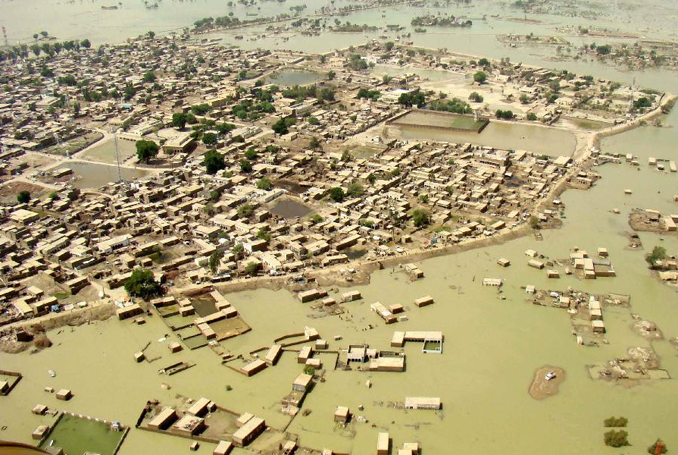Written by: Zahra Belal - Posted on: August 21, 2014 |  Comments
Comments
Google Translation: اُردو | 中文
Climate Change for most of us laymen seems like a very technical term that evokes some abstract and prosaic imagination. This vagueness about the concept of Climate Change and, most importantly, lack of awareness about its implications has helped maintained the status quo - i.e., of lack of policy initiative as well as media attention and public interest.
An ostrich’s head-burying approach however does not make the storms go away. It is particularly dangerous when already many feathers and plumes have been shed in recent years in Pakistan and all across the globe, an ominous sign of the greater destruction yet to come.
In recent years, these omens have been the consecutive flash floods in Pakistan in the years 2010, 2011 and 2012 that inflicted colossal human and economic losses. According to the Pakistan Economic Survey 2013-2014, the three floods cost Pakistan 3072 lives and $16 billion. Ishrat Hussain, a leading economist, says; “The impact of floods on Pakistan’s economy is colossal as the economy grew on average at a rate of 2.9 percent per year during the last three years.”
 |
The cause of this destruction has been identified to be climate change. The latter term refers to any change in the climate over time which has been marked by a 0.6°C increase in average temperature, changes in precipitation patterns, a 0.19m rise in the sea level and higher frequency of extreme climates e.g. storms, floods, cyclones, droughts etc.
The question, then, is,? how did this climate change cause flash floods? Rising temperatures are causing the glaciers to melt at a higher rate. As a result, the volume of water in the rivers is increasing, thereby causing floods.
According to the Cabinet Division on Climate Change, Pakistan’s glaciers have seen a higher rate of recession, an increase of 35% in the last decade alone. As a consequence, there is inundation of the floods that are fed by these glaciers in the short run. However, in the long run, the fast rate of recessions means the glaciers are disappearing and thus rivers will dry up, leading to draughts and famine. It is projected that 4/5th of all Himalayan glaciers are expected to melt very soon which will bring down the river water levels markedly and affect the lives of around 500 million people.
A study, led by Yao Tandong, director of the Institute of Tibetan Research at the Chinese Academy of Sciences in Beijing, and eminent glaciologist and paleo-climatologist Lonnie Thompson of Ohio State University, states the Naimona'nyi glacier, which feeds the Indus River, had shrunk by 155m within the 30 years from 1976 to 2006, at a rate of about five metres per year.
Practically, what this means for us is that there will be floods in the short-run like the ones that have been experienced previously, and there will be droughts in the long-run as the glaciers shrink and provide less water to the rivers. Food shortage can be expected in both the scenarios as floods destroy crops while draught do not allow them to grow.
Hence, the big question is, what are we doing about these imminent disasters?